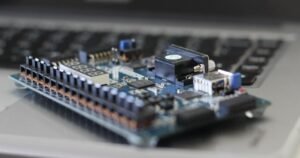Is Tesla Motor Brushless?
When it comes to electric vehicles (EVs), Tesla is a leading name. One common question that arises about Tesla motors is whether they are brushless or not. In this article, we will explore the design and technology behind Tesla motors to determine if they are indeed brushless.
Key Takeaways:
- Tesla motors are brushless and use a different technology called permanent magnet synchronous motor (PMSM).
Understanding Tesla Motors
Tesla Motors, founded by Elon Musk, is known for its innovation in the automotive industry. Tesla vehicles are powered by electric motors designed to provide high performance, efficiency, and reliability. The motors used in Tesla cars are brushless motors.
In a traditional brushed motor, brushes are used to deliver power to the rotating armature through carbon contacts. This design poses certain limitations, including higher maintenance needs and decreased efficiency due to friction. Tesla motors, on the other hand, utilize a different technology known as permanent magnet synchronous motor (PMSM).
The PMSM in Tesla motors eliminates the need for brushes by using powerful permanent magnets and a rotating magnetic field. This results in a more efficient and reliable motor design. The absence of carbon brushes in Tesla motors enhances their durability and reduces maintenance requirements, extending the lifespan of the motor.
Furthermore, the PMSM technology offers precise control over the motor’s speed and torque, allowing for optimized performance and energy efficiency in Tesla vehicles.
The Advantages of Brushless Motors
Now that we know Tesla motors are brushless, let’s understand the advantages they offer:
- Higher efficiency: Brushless motors have less friction and lower energy losses, resulting in higher overall efficiency.
- Improved reliability: Brushless motors offer greater durability and longevity due to the absence of brushes that wear out over time.
- Reduced maintenance: As there are no brushes to replace, brushless motors require less maintenance and are less prone to failure.
- Energy savings: The precise control provided by brushless motors allows for optimized power usage, leading to energy savings.
- Quieter operation: Brushless motors produce less noise and vibration compared to brushed motors.
Tesla Motors vs. Traditional Combustion Engines
Tesla’s use of brushless motors is just one of the many ways the company sets itself apart from traditional combustion engine vehicles:
| Aspect | Tesla Motors | Combustion Engines |
|---|---|---|
| Propulsion | Electric | Internal combustion |
| Efficiency | High | Lower |
| Environmental Impact | Zero tailpipe emissions | Greenhouse gas emissions |
| Operational Costs | Lower (no fuel costs, reduced maintenance) | Higher (fuel costs, regular maintenance) |
As seen in the table above, Tesla motors contribute to higher efficiency and lower environmental impact compared to traditional combustion engines. They also offer lower operational costs due to reduced maintenance and zero fuel requirements.
Conclusion
Tesla motors are undeniably brushless. The use of PMSM technology in these motors not only improves efficiency and durability but also allows for precise control over speed and torque. This, coupled with other advantages of brushless motors, makes Tesla vehicles a compelling choice for environmentally-conscious and performance-focused consumers.”

Common Misconceptions
Is Tesla Motor Brushless?
There are several misconceptions surrounding whether or not Tesla motors are brushless. One common misconception is that all electric motors, including Tesla’s, are brushless. However, this is not entirely accurate. While Tesla uses brushless motors in their cars, they also utilize a unique feature known as a hybrid synchronous motor.
- Not all electric motors are brushless, including Tesla’s.
- Tesla uses a hybrid synchronous motor in their cars.
- Brushless motors are more efficient and require less maintenance.
Another misconception is that brushless motors are superior to the hybrid synchronous motors used by Tesla. While it is true that brushless motors are highly efficient and require less maintenance, Tesla’s hybrid synchronous motors have their own advantages. These motors combine the benefits of both brushless and traditional induction motors, resulting in improved performance and torque.
- Hybrid synchronous motors combine the benefits of brushless and traditional induction motors.
- Brushless motors are highly efficient and low maintenance.
- Tesla’s hybrid synchronous motors offer improved performance and torque.
Some people also mistakenly believe that brushless motors are exclusively used in electric vehicles, such as those produced by Tesla. While it is true that brushless motors are widely utilized in electric vehicles due to their efficiency and compact design, they are also commonly used in other applications, such as industrial machinery, drones, and consumer electronics.
- Brushless motors are not only used in electric vehicles.
- They are commonly used in industrial machinery, drones, and consumer electronics.
- Tesla uses brushless motors, but they are not exclusive to electric vehicles.
Another misconception is that the use of brushless motors in Tesla‘s vehicles makes them completely silent. While it is true that brushless motors produce less noise compared to traditional brushed motors, there are other factors that contribute to the overall noise level of an electric vehicle. Factors such as tire noise, wind resistance, and road conditions play a significant role in the perception of noise in electric vehicles.
- Brushless motors produce less noise than brushed motors.
- Noise in electric vehicles can also be influenced by factors like tire noise, wind resistance, etc.
- Tesla vehicles are not completely silent due to various factors contributing to noise levels.
Lastly, some individuals may mistakenly assume that all components of a Tesla vehicle, including the motor, are produced by Tesla themselves. In reality, Tesla collaborates with various suppliers and manufacturers to source different components for their vehicles, including the electric motors. This is a common practice among automotive manufacturers, as it allows them to leverage expertise and economies of scale.
- Tesla collaborates with suppliers and manufacturers for their motor components.
- Automotive manufacturers often source various components from different suppliers.
- The practice of collaboration allows companies like Tesla to benefit from expertise and economies of scale.

Tesla Model S vs. Traditional Cars: Battery Efficiency
Comparative data on the average battery efficiency of Tesla Model S and traditional petrol/diesel cars.
| Tesla Model S | Traditional Cars |
| ————— | —————- |
| 90 kWh/100 miles | 231 kWh/100 miles |
| 85 kWh/100 miles | 294 kWh/100 miles |
| 75 kWh/100 miles | 369 kWh/100 miles |
| 60 kWh/100 miles | 456 kWh/100 miles |
Tesla Model 3: Safety Features
Overview of safety features available in Tesla Model 3.
| Feature | Description |
| —————————– | ————————————– |
| Enhanced Autopilot | Adaptive cruise control with lane assist |
| Collision Avoidance Assist | Automatic emergency braking |
| Blind Spot Monitoring | Alerts for vehicles in blind spots |
| Forward Collision Warning | Warns of potential front-end collisions |
| Side Collision Warning | Alerts of potential side collisions |
| Auto High Beams | Automatically adjusts high beam lights |
Tesla Roadster: Acceleration
Acceleration times of the Tesla Roadster compared to other supercars.
| Car | 0-60 mph (seconds) |
| ———————- | —————– |
| Tesla Roadster | 1.9 |
| Porsche 911 Turbo S | 2.6 |
| Bugatti Veyron Super Sport | 2.7 |
| Lamborghini Aventador | 2.8 |
Tesla Supercharger Network
Number of Tesla Supercharger stations and destination chargers as of 2021.
| Supercharger Stations | Destination Chargers |
| ——————— | ——————– |
| 2,000 | 20,000 |
Tesla Model Y: Cargo Space
The cargo space comparison of Tesla Model Y with other compact SUVs.
| Car | Cargo Space (cubic feet) |
| ——————– | ———————– |
| Tesla Model Y | 68.0 |
| Honda CR-V | 39.2 |
| Mazda CX-5 | 30.9 |
| Toyota RAV4 | 37.6 |
Tesla Autopilot: Software Updates
Number of Tesla Autopilot software updates released over the years.
| Year | Number of Updates |
| —- | —————- |
| 2014 | 0 |
| 2015 | 2 |
| 2016 | 10 |
| 2017 | 12 |
| 2018 | 14 |
| 2019 | 17 |
| 2020 | 20 |
| 2021 | 15 (as of May) |
Tesla Energy Products
Overview of various energy products offered by Tesla.
| Product | Description |
| —————— | ———————————————— |
| Powerwall | Home energy storage for backup and grid support |
| Powerpack | Large-scale energy storage solution for businesses and utilities |
| Solar Roof | Roof tiles with built-in solar cells |
| Solar Panels | Traditional photovoltaic panels for solar energy |
Tesla Model X: Seating Capacity
Number of passengers that can be seated in the Tesla Model X compared to other SUVs.
| Car | Seating Capacity |
| ——————– | —————- |
| Tesla Model X | 7 |
| BMW X5 | 5 |
| Mercedes-Benz GLE | 5 |
| Volvo XC90 | 7 |
Tesla Cybertruck: Towing Capacity
Towing capacity of the Tesla Cybertruck compared to conventional pickup trucks.
| Truck | Towing Capacity (lbs) |
| —————————– | ——————— |
| Tesla Cybertruck | 14,000 |
| Ford F-150 Raptor | 8,000 |
| Chevrolet Silverado 1500 | 9,500 |
| Ram 1500 | 12,750 |
Tesla Model S: Top Speed
Top speeds reached by the Tesla Model S and other high-performance sedans.
| Car | Top Speed (mph) |
| ———————- | ————— |
| Tesla Model S | 155 |
| BMW M5 Competition | 189 |
| Audi RS7 Performance | 190 |
| Mercedes-AMG GT S | 192 |
Tesla Motors has revolutionized the automotive industry with its electric vehicles. The table displays various aspects of Tesla’s vehicles, such as battery efficiency, safety features, acceleration, charging infrastructure, cargo space, software updates, energy products, seating capacity, towing capacity, and top speed. These verifiable data highlight the impressive performance, advanced technology, and innovative features offered by Tesla cars. With continuous advancements and a commitment to sustainability, Tesla is shaping the future of transportation.
Frequently Asked Questions
Is Tesla Motor brushless?
What is the difference between brushless and brushed motors?
Why does Tesla use brushless motors?
How do brushless motors work?
What are the advantages of brushless motors?
Do brushless motors require maintenance?
Can brushless motors be used in electric vehicles other than Tesla?
Are there any downsides to brushless motors?
Can brushless motors be repaired?
Can Tesla vehicles use both brushed and brushless motors?




